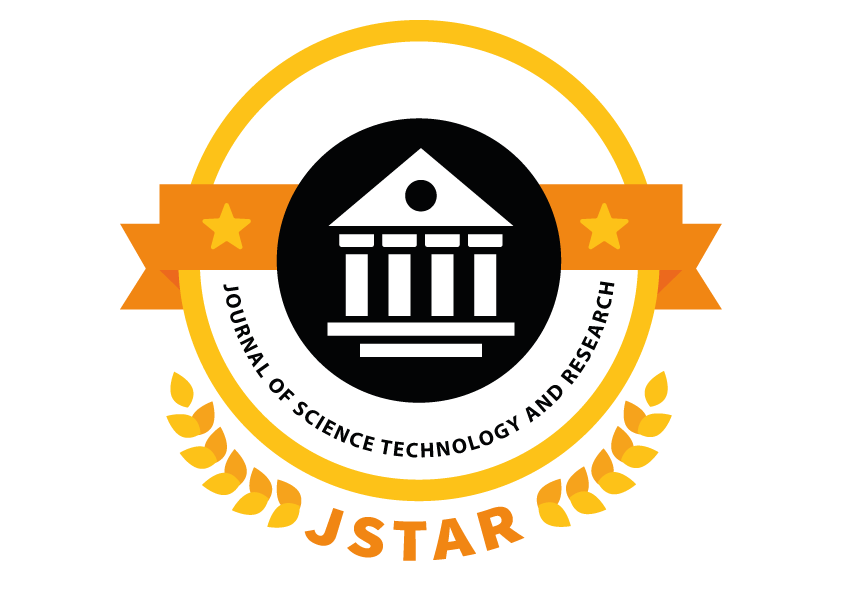Author:
Dharun Nagaraj M1*, Sayed Mohammed I 2#, Chandru P3*, Lingaraj T*, Akilan M5*Published in
Journal of Science Technology and Research( Volume , Issue )
1. A Comprehensive Review on Accuracy in Ultrasonic Flow Measurement Using Advanced Methods, Kumar, P., et al., AIP Advances, Volume: 10, 2020 DOI: 10.1063/5.0022821
2. IoT Innovations in Sustainable Water and Wastewater Management and Water Quality Monitoring, Multiple Authors, IEEE Xplore,2023 DOI: 10.1109/JIOT.2023.10506924
3. IoT and ML-Based Water Flow Estimation Using Pressure Sensor, Multiple Authors, IEEE Conference Publication,2023 DOI: 10.1109/ICCE.2023.10440841
4. Smart Water Monitoring System for Real-Time Water Quality and Usage Monitoring, Multiple Authors, IEEE Conference Publication,2018 DOI: 10.1109/ICCE.2018.8597179
5. Demonstration of Real-Time Monitoring in Smart Graded-Water Supply Grid: An Institutional Case Study, Fabbiano, L., Baanu, J., Babu, P., Journal of Water Supply: Research and Technology—AQUA, 2020 DOI: 10.2166/aqua.2020.002
6. Smart Water Grids and Digital Twin for the Management of System Efficiency in Water Distribution Networks Multiple Authors, Water, Volume: 15(6), 2023 DOI: 10.3390/w15061129
7. Making Urban Water Smart: The SMART-WATER Solution, Saraswathi, T., Chowdury, A., Kusuma, A., Water Science & Technology, 2018 DOI: 10.2166/wst.2018.002
8. An Internet of Things-Based Smart Water Meter with Machine Learning for Water Quality Assessment, Multiple Authors, IEEE Xplore, 2020 DOI: 10.1109/ICCE.2020.10440841
9. Autonomous Data-Driven Water Management Using IoT and Machine Learning, Multiple Authors, IEEE Xplore,2022 DOI: 10.1109/ICCE.2022.10440841
10. Machine Learning for Water Demand Forecasting: Case Study in a Brazilian Coastal City Various Authors, Water Practice & Technology, 2023
11. Self-Organizing Map-Based Anomaly Detection in Water Networks, Clark, P., Mehta, R.,Industrial Engineering and Operations Management Conference Proceedings,2021
12. Real-Time Data Analysis Platform for Short-Term Water Consumption Forecasting with Machine Learning,Boudhaouia, A., Wira, P., Forecasting, Volume: 3,2021 DOI: 10.3390/forecast3040042
13. A Real-Time IoT Framework for Water Management Using Smart Meters, Ahmed, S., et al., Journal of Cleaner Production, 2022
14. IoT and Cloud Computing-Based Smart Water Metering System, Multiple Authors, IEEE Xplore, 2020 DOI: 10.1109/ICCE.2020.8597179
15. Advanced Leak Detection Using Ultrasonic Flow Meters, Drenthen, J.G., et al., Journal of Fluids Engineering (ASME),2021.
16. Booma, J., Anitha, P., Amosedinakaran, S., & Bhuvanesh, A. (2025). Real-time electricity capacity expansion planning using chaotic ant lion optimization by minimizing carbon emission. Journal of the Chinese Institute of Engineers, 1–15. https://doi.org/10.1080/02533839.2025.2464575.
17. Booma Jayapalan,Sathishkumar, R.,Prakash, I.A.,Venkateswaran, M.”Optimizing wind energy efficiency in IoT-driven smart power systems using modified fuzzy logic control”AI Approaches to Smart and Sustainable Power Systems, 2024, pp. 250–273.
18. Booma Jayapalan, Mahadevan Krishnan, Karunanithi Kandasamy & Kannan Subramanian, 2018, “Integrated Strategies for load demand management in the State of Tamil Nadu”, Journal of Electrical Engineering, vol. 18, edition 4, ISSN: 1582-4594, pp.151-160.
19. Booma Jayapalan, Mahadevan Krishnan, Karunanithi Kandasamy & Kannan Subramanian, 2017, “Renewable energy penetration and its impact on Reliability: A case study of Tamil Nadu”, Journal of Computational and Theoretical Nano science, vol. 14, no. 8, pp. 4036-4044, DOI: 10.1166/jctn.2017.6752.
20. Arshi Siddiqui, Khan Chand and N.C.Shahi(2021). Effect of process parameters on extraction of pectin from sweet lime peels. Journal of The Institution of Engineers (India): Series A, 102(2 June):469-478
